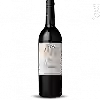
Winery Baron Philippe de RothschildMise de La Baronnie Bordeaux
In the mouth this red wine is a powerful with a nice balance between acidity and tannins.
This wine generally goes well with poultry, beef or veal.
Taste structure of the Mise de La Baronnie Bordeaux from the Winery Baron Philippe de Rothschild
Light | Bold | |
Smooth | Tannic | |
Dry | Sweet | |
Soft | Acidic |
In the mouth the Mise de La Baronnie Bordeaux of Winery Baron Philippe de Rothschild in the region of Bordeaux is a powerful with a nice balance between acidity and tannins.
Food and wine pairings with Mise de La Baronnie Bordeaux
Pairings that work perfectly with Mise de La Baronnie Bordeaux
Original food and wine pairings with Mise de La Baronnie Bordeaux
The Mise de La Baronnie Bordeaux of Winery Baron Philippe de Rothschild matches generally quite well with dishes of beef, veal or game (deer, venison) such as recipes of spaghetti squash bolognese style, veal cutlets parmigiana or lamb chops marinated with herbs.
Details and technical informations about Winery Baron Philippe de Rothschild's Mise de La Baronnie Bordeaux.
Discover the grape variety: Couderc noir
Natural interspecific crossing between Jaeger 70 (Vitis Rupestris x Vitis Lincecumii) and an unknown Vitis Vinifera discovered by Eugène Contassot, the seeds from this crossing having been offered to/seeded by Georges Couderc. This direct-producing hybrid was the most widely planted, particularly in the south of France. There are still a few strains in production today, but it is practically no longer multiplied, although it is registered in the Official Catalogue of Vine Varieties, list A1. - Synonymy: Couderc 7120, Contassot 20 (for all the synonyms of the varieties, click here!).
Last vintages of this wine
The best vintages of Mise de La Baronnie Bordeaux from Winery Baron Philippe de Rothschild are 2010, 2018, 2017, 2016 and 2015.
Informations about the Winery Baron Philippe de Rothschild
The Winery Baron Philippe de Rothschild is one of of the world's great estates. It offers 184 wines for sale in the of Bordeaux to come and discover on site or to buy online.
The wine region of Bordeaux
Bordeaux, in southwestern France, is one of the most famous, prestigious and prolific wine regions in the world. The majority of Bordeaux wines (nearly 90% of the production Volume) are the Dry, medium and Full-bodied red Bordeaux blends for which it is famous. The finest (and most expensive) are the wines of the great châteaux of Haut-Médoc and the right bank appellations of Saint-Émilion and Pomerol. The former focuses (at the highest level) on Cabernet Sauvignon, the latter on Merlot.
The word of the wine: Wiring
Action of periodically filling barrels containing wine, in order to offset evaporation and maintain a maximum level. The topping up allows to avoid the phenomenon of oxidation.












